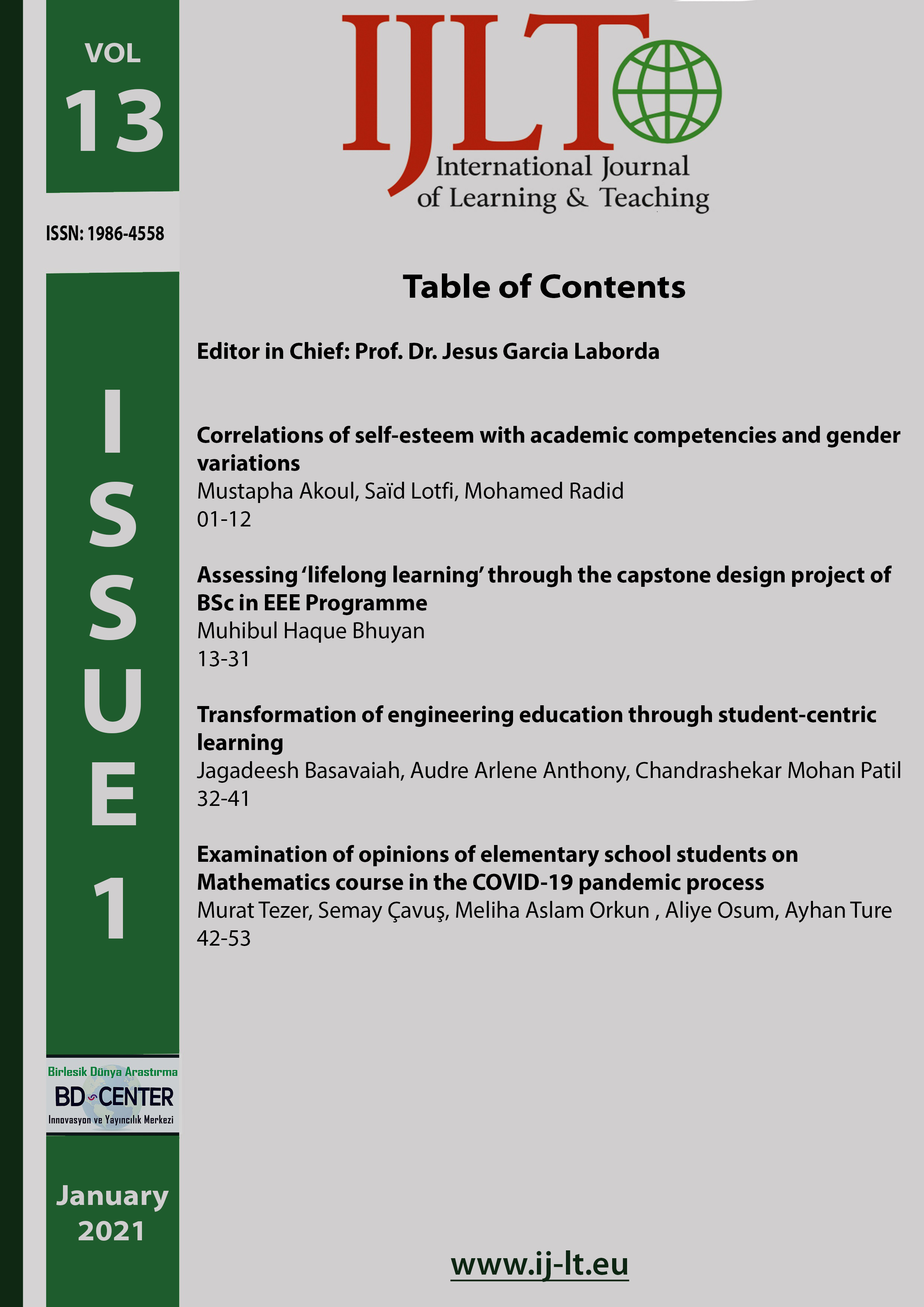Transformation of engineering education through student-centric learning
Main Article Content
Abstract
Modernisation in higher education is one of the major objectives to meet the universal challenges and provide higher knowledge-based and sustainable development levels. It is decisive to encourage the quality of teaching and innovative pedagogy. Technological advancement has led to the development of many efficient methods for innovative pedagogies in the field of education. Engineering education is built on a new-fangled standard in which engineering is to be practiced with technical expertise as well as social responsibility. The teaching fraternity has incorporated a lot of teaching strategies for changing teacher-centric education to learner-centric education. This paper aims to present the aspects of the teaching–learning process, teaching pedagogy and curricular approaches of engineering pedagogy and study the teaching strategies followed by engineering teachers. To study the different teaching strategies followed by teachers in engineering education, an online survey on teaching strategies was conducted for the engineering teaching fraternity all over India. The survey depicts that there is a change in the teaching and learning process from teacher-centric education to learner-centric education. Almost 80%–90% of the teachers follow student-centric teaching by using different tools and strategies, which in turn results in outcome-based education.
                      Â
Keywords: Engineering education, learning, learner-centric, outcome-based education, pedagogy, teaching, teaching strategies.
Downloads
Article Details

This work is licensed under a Creative Commons Attribution 4.0 International License.
Authors who publish with this journal agree to the following terms:
- Authors retain copyright and grant the journal right of first publication with the work simultaneously licensed under a Creative Commons Attribution License that allows others to share the work with an acknowledgement of the work's authorship and initial publication in this journal.
- Authors are able to enter into separate, additional contractual arrangements for the non-exclusive distribution of the journal's published version of the work (e.g., post it to an institutional repository or publish it in a book), with an acknowledgement of its initial publication in this journal.
- Authors are permitted and encouraged to post their work online (e.g., in institutional repositories or on their website) prior to and during the submission process, as it can lead to productive exchanges, as well as earlier and greater citation of published work (SeeThe Effect of Open Access).
